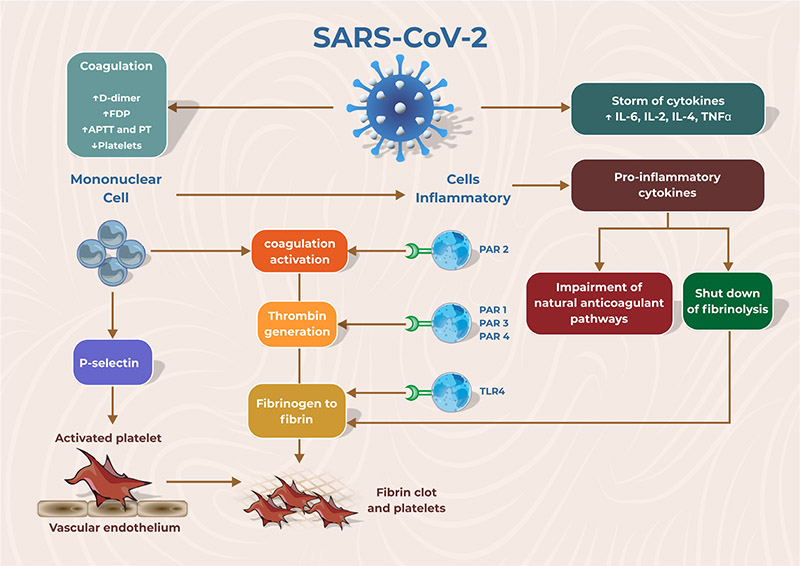Volume 114, Nº 5, May 2020
DOI: https://doi.org/10.36660/abc.20200308
VIEWPOINT
COVID-19 and Hypercoagulable State: A New Therapeutic Perspective
Jorge Henrique Paiter Nascimento
Bruno Ferraz de Oliveira Gomes
Plinio Resende
João Luiz Fernandes Petriz
Stephanie Itala Rizk
Isabela Bispo Santos da Silva Costa
Fernando Bacal
Ludhmilla Abraão Hajjar
Gláucia Maria Moraes de Oliveira

Figure 1 – The novel coronavirus, SARS-CoV-2, activates the inflammatory and thrombotic process. The disease it causes is associated with an increase in inflammatory cytokines (cytokine storm) and coagulation disorders, with predisposition to thrombus formation. Mononuclear cells interact with activated platelets and the coagulation cascade, which activate inflammatory cells by binding thrombin and tissue factor with specific protease activated receptors and by binding fibrin to Toll-like receptor 4. The activation of inflammatory cells results in the release of pro-inflammatory cytokines, leading to impairment of the natural coagulation pathways and shut down of fibrinolysis. PAR: protease-activated receptor; TLR4: Toll-like receptor 4; aPTT: activated partial thromboplastin time; PT: prothrombin time; IL: interleukin; TNFα: tumor necrosis factor-α.Figure adapted from Levi M, van der Poll T.25
Keywords: COVID-2019; Betacoronavirus; Catastrophic Illness; Viral, Pneumonia; Pandemics; Coronavirus Infections; Complications, Cardiovasculares; Thrombophilia; Anticoagulants/therapeutic use.















